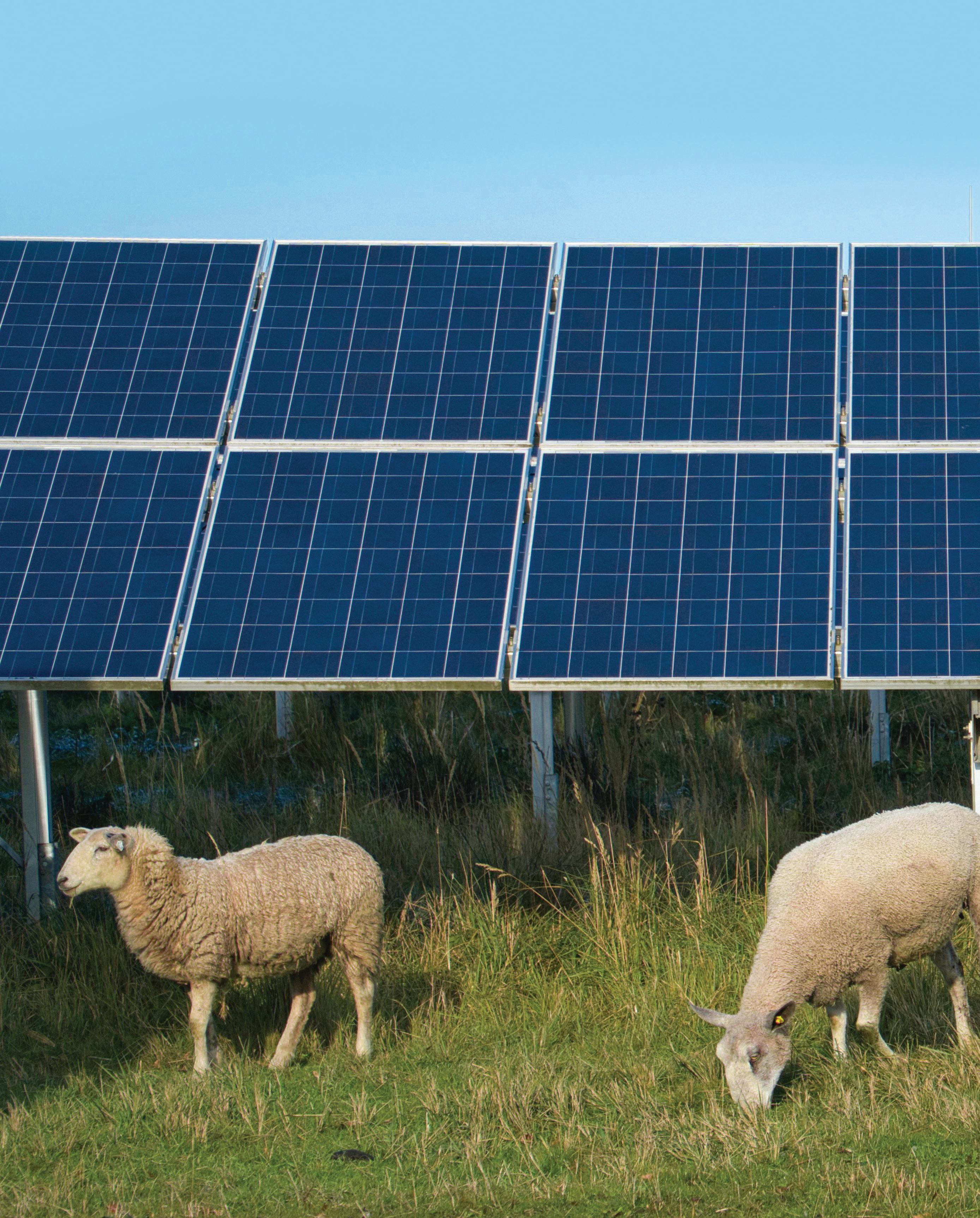
4 minute read
UNDER THE SUN
Solar mini grids could power half a billion people by 2030—if action is taken now
Solar mini grids have become the leastcost way to bring high-quality 2 4/7 electricity to towns and cities off the grid or experiencing regular power cuts.

Solar mini grids can provide high-quality uninterrupted electricity to nearly half a billion people in unpowered or underserved communities and be a least-cost solution to close the energy access gap by 2030. But to realise the full potential of solar mini grids, governments and industry must work together to systemically identify mini grid opportunities, continue to drive costs down, and overcome barriers to financing, says a new World Bank report.
Around 733 million people, mostly in sub-Saharan Africa, still lack access to electricity. The pace of electrification has slowed down in recent years, due to the difficulties in reaching the remotest and most vulnerable populations, as well as the devastating effects of the COVID-19 pandemic. At the current rate of progress, 670 million people will remain without electricity by 2030.
“Now more than ever, solar mini grids are a core solution for closing the energy access gap,” says Riccardo Puliti, Infrastructure vice-president at the World Bank. “The World Bank has been scaling up its support to mini grids as part of helping countries develop comprehensive electrification programmes. With $1.4 billion across 30 countries, our commitments to mini grids represent about onequarter of total investment in mini grids by the public and private sector in our client countries.
“To realise mini grids’ full potential to connect half a billion people by 2030, several actions are needed, such as incorporating mini grids into national electrification plans and devising financing solutions adapted to mini grid projects’ risk profiles.”

The deployment of solar mini grids has seen an important acceleration, from around 50 per country per year in 2018 to more than 150 per country per year today, particularly in countries with the lowest rates of access to electricity. This is the result of falling costs of key components, the introduction of new digital solutions, a large and expanding cohort of highly capable mini grid developers, and growing economies of scale.
Solar mini grids have become the leastcost way to bring high-quality 24/7 electricity to towns and cities off the grid or experiencing regular power cuts. The cost of electricity generated by solar mini grids has gone down from $0.55/kWh in 2018 to $0.38/kWh today. Modern solar mini grids now provide enough electricity for life-changing electric appliances such as refrigerators, welders, milling machines or e-vehicles.
Mini grid operators can manage their systems remotely, and paid-smart meters enable customers to pay as they use the electricity.
Connecting 490 million people to solar mini grids would avoid 1.2 billion tonnes of carbon emissions.
Further acceleration is needed, however, to meet Sustainable Development Goal 7. Powering 490 million people by 2030 will require the construction of more than 217 000 mini grids at a cumulative cost of $127 billion. At current pace, only 44 800 new mini grids serving 80 million people will be built by 2030, at a total investment cost of $37 billion.
Produced by the World Bank’s Energy Sector Management Assistance Programme, the new handbook, Mini Grids for Half a Billion People: Market Outlook and Handbook for Decision Makers (bit.ly/3CILvZW), is the World Bank’s most comprehensive and authoritative publication on mini grids to date.
It identifies five market drivers to set the mini grid sector on a trajectory to achieve full market potential and universal electrification.
• Reducing the cost of electricity from solar hybrid mini grids to $0.20/kWh by 2030, which would put life-changing power in the hands of half a billion people for just $10 per month;
• Increasing the pace of deployment to 2 000 mini grids per country per year, by building portfolios of modern mini grids instead of one-off projects;
• Providing superior quality service to customers and communities by providing reliable electricity for 3 million incomegenerating appliances and machines, and 200 000 schools and clinics;
• Leveraging development partner funding and government investment to ‘crowd in’ private-sector finance, raising $127 billion in cumulative investment from all sources for mini grids by 2030; and
• Establishing enabling mini grid business environments in key access-deficit countries through light-handed and adaptive regulations, supportive policies, and reductions in bureaucratic red tape.
World Bank Group www.worldbank.org
The National Energy Regulator of South Africa (NERSA) ensures the orderly development of the energy sector, mainly through licensing, setting and approving of prices and tariffs, compliance monitoring and enforcement, and dispute resolution in the electricity, piped-gas and petroleum pipelines industries.







NERSA endeavours to be more innovative and agile in ensuring that we continue to make a valuable contribution to the socio-economic development and prosperity of the people of South Africa, by regulating the energy industry in accordance with government laws, policies, standards and international best practices in support of sustainable development.
NERSA is a regulatory authority established as a juristic person in terms of section 3 of the National Energy Regulator Act, 2004 (Act No. 40 of 2004).
NERSA’s mandate is to regulate the electricity, piped-gas and petroleum pipelines industries in terms of the Electricity Regulation Act, 2006 (Act No. 4 of 2006), Gas Act, 2001 (Act No. 48 of 2001) and Petroleum Pipelines Act, 2003 (Act No. 60 of 2003).
NERSA’s mandate is further derived from written government policies and regulations issued by the Minister of Mineral Resources and Energy. NERSA is expected to perform the necessary regulatory actions in anticipation of and/or in response to the changing circumstances in the energy industry.



The Minister of Mineral Resources and Energy appoints Members of the Energy Regulator, comprising Part-Time (Non-Executive) and Full-Time (Executive) Regulator Members, including the Chief Executive Officer (CEO). The Energy Regulator is supported by staff under the direction of the CEO.










